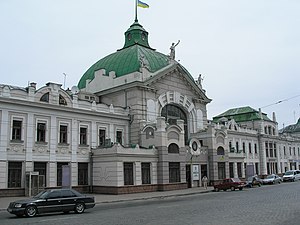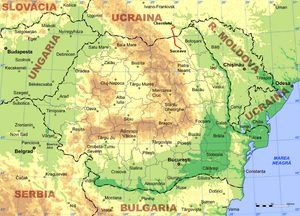Chernivtsi – Suceava railway line
| Chernivtsi – Suceava | |||||||||||||||||||||||||||||||||||||||||||||||||||||||||||||||||||||||||||||||||||||||||||||||||||||||||||||||||||||||||||||||||
|---|---|---|---|---|---|---|---|---|---|---|---|---|---|---|---|---|---|---|---|---|---|---|---|---|---|---|---|---|---|---|---|---|---|---|---|---|---|---|---|---|---|---|---|---|---|---|---|---|---|---|---|---|---|---|---|---|---|---|---|---|---|---|---|---|---|---|---|---|---|---|---|---|---|---|---|---|---|---|---|---|---|---|---|---|---|---|---|---|---|---|---|---|---|---|---|---|---|---|---|---|---|---|---|---|---|---|---|---|---|---|---|---|---|---|---|---|---|---|---|---|---|---|---|---|---|---|---|---|---|
|
Railway station in Chernivtsi
| |||||||||||||||||||||||||||||||||||||||||||||||||||||||||||||||||||||||||||||||||||||||||||||||||||||||||||||||||||||||||||||||||
| Route length: | 89 km | ||||||||||||||||||||||||||||||||||||||||||||||||||||||||||||||||||||||||||||||||||||||||||||||||||||||||||||||||||||||||||||||||
| Gauge : | 1435/1520 mm | ||||||||||||||||||||||||||||||||||||||||||||||||||||||||||||||||||||||||||||||||||||||||||||||||||||||||||||||||||||||||||||||||
| Power system : | 25 kV / 50 Hz ~ | ||||||||||||||||||||||||||||||||||||||||||||||||||||||||||||||||||||||||||||||||||||||||||||||||||||||||||||||||||||||||||||||||
|
|||||||||||||||||||||||||||||||||||||||||||||||||||||||||||||||||||||||||||||||||||||||||||||||||||||||||||||||||||||||||||||||||
The Chernivtsi (Chernivtsi) –Suceava railway is a main line in Ukraine and Romania . It runs in the Bukovina .
history
On September 1, 1866, the railway line from Lemberg to Chernivtsi went into operation in Austria-Hungary . It was built and operated by the Lemberg-Chernivtsi-Jassy Railway Company (LCJE). On May 15, 1867, this received the concession for the continuation of the railway to Suceava on what was then the Austrian-Romanian border.
The concession stipulated that work had to begin in the same year and should be completed by the end of 1869. One reason for the quick start of construction was the endeavor to provide employment opportunities for the population of Bukovina suffering from famine. Despite the unfavorable terrain, the line was opened on October 28, 1869 as planned. Together with the commissioning of the Suceava – Roman railway line on December 15, 1869 , Romania now had a connection to its railway network with other countries. The Austrian-Romanian border was immediately south of the Itzkany station (Romanian Ițcani , today Suceava Nord station).
Despite its importance, the route initially remained in deficit due to the difficult economic conditions in Bukovina and northern Moldova. The Austrian government imposed a compulsory administration on the route from 1872 to 1875 . In the years 1889-1894 it was nationalized against corresponding compensation payments; the operation was now carried out by the kk Staatsbahnen (kkStB).
As a result of the First World War , the Bukovina came to Romania; the railway line described here temporarily lay entirely on Romanian territory until the Soviet Union occupied northern Bukovina in 1940 and thus also divided the railway line. After northern Bukovina was recaptured by Romania in 1941, it has belonged again to the Soviet Union since 1944 and to the Ukraine since 1991 . After the Second World War, the northern part of the line was provided with broad gauge tracks .
Current situation
The entire line is single-track and electrified on the section from Suceava Nord to Dărmăneşti with alternating current (25 kV, 50 Hz). It is currently (2009) the only rail border crossing for passenger traffic between Ukraine and Romania and is also of importance for goods traffic between the two countries. The gauge change facility is located on the Ukrainian side in Wadul Siret.
The only cross-border passenger train in 2009 was the Moscow – Sofia train with through coaches from Kiev. There are also some regional trains between Chernivtsi and Wadul Siret or Dorneşti and Suceava. In 2019 there was only one cross-border transfer connection a day, and a direct connection once a week in the sleeping car of the through-car Bucharest – Kiev.
Individual evidence
- ^ Österreichische Revue 1867, Issue 1. Verlag Carl Gerold 1867. P. 70.
- ^ Reichsgesetzblatt of 1867, No. 85, page 179
- ↑ Karl Prochaska: History of the railways of the Austrian-Hungarian monarchy. Volume 1, Part 2. K. uk Hofbuchhandlung. Vienna 1898. pp. 34–37.
- ^ Lothar Maier: Romania on the way to the declaration of independence 1866–1877: appearance and reality of a liberal constitution and state sovereignty. Oldenbourg Wissenschaftsverlag, 1989. pp. 170-185.
- ↑ Victor von Röll : Enzyklopädie des Eisenbahnwesens, Volume 7. Berlin, Vienna 1915. P. 96–97.


